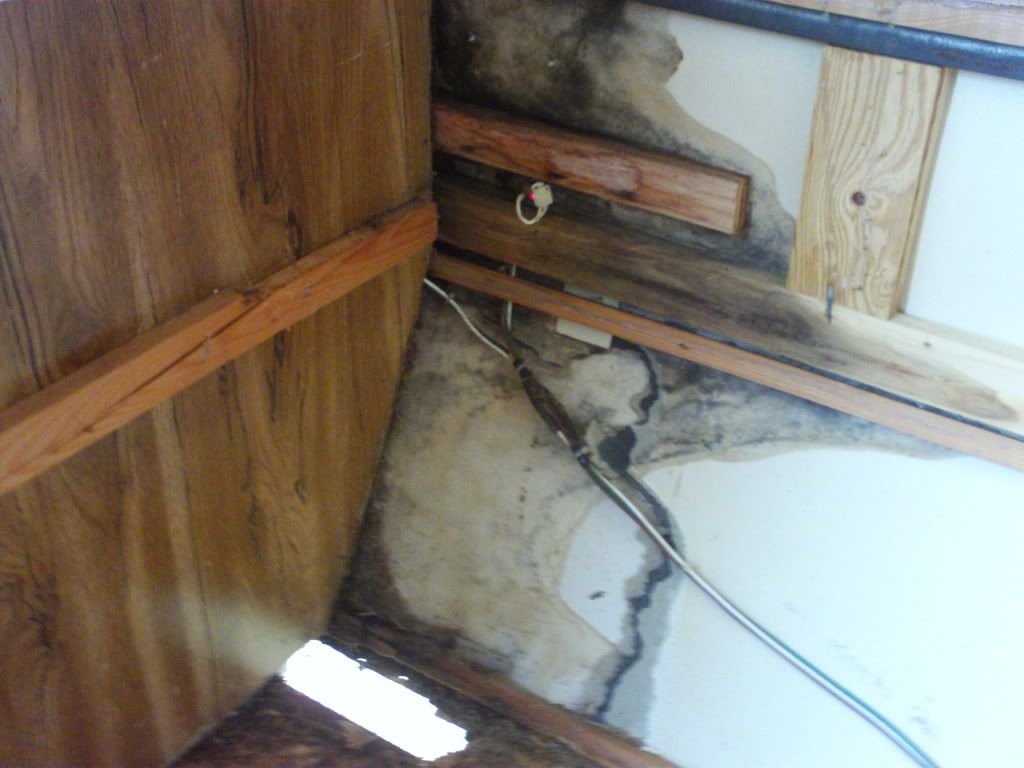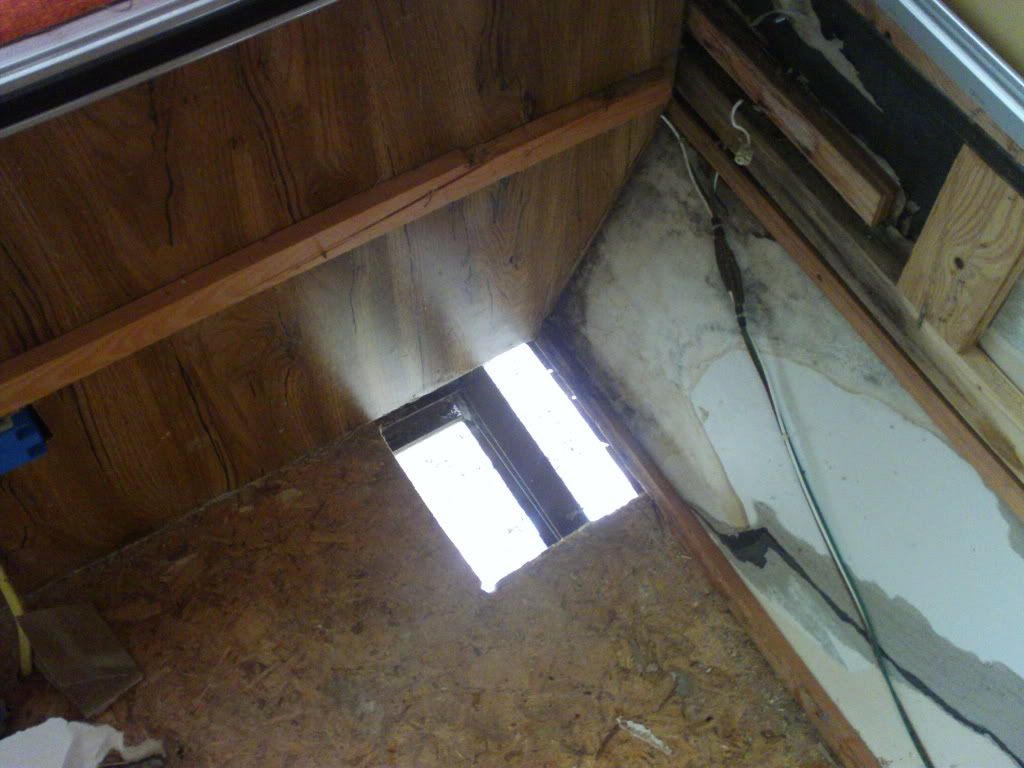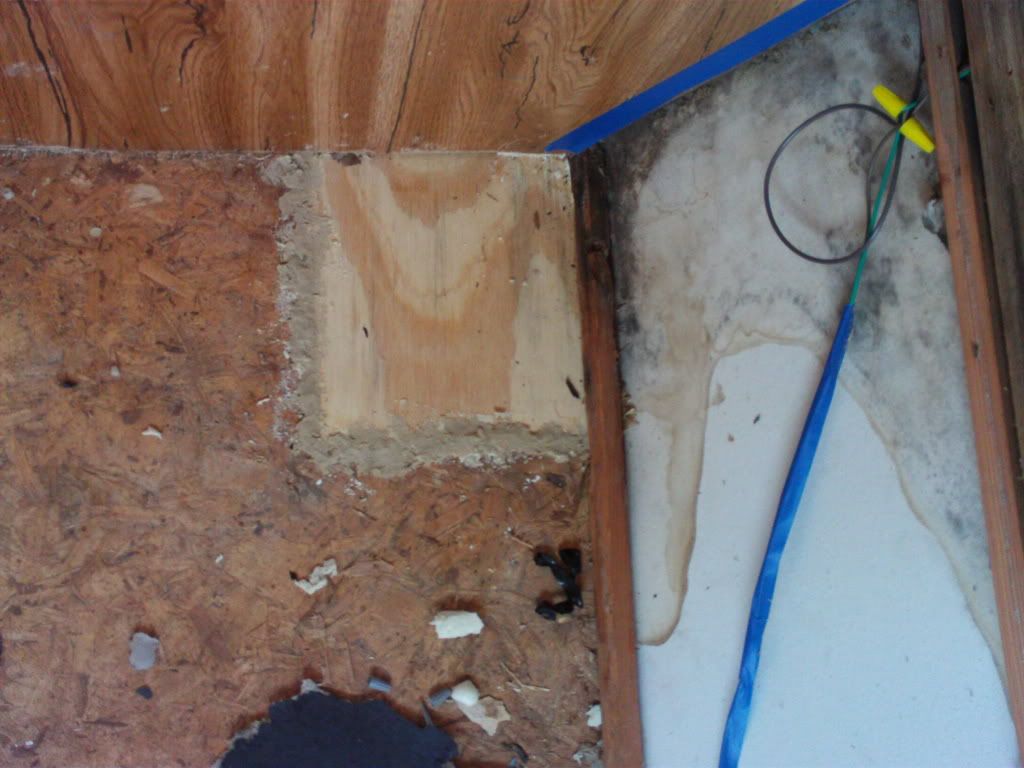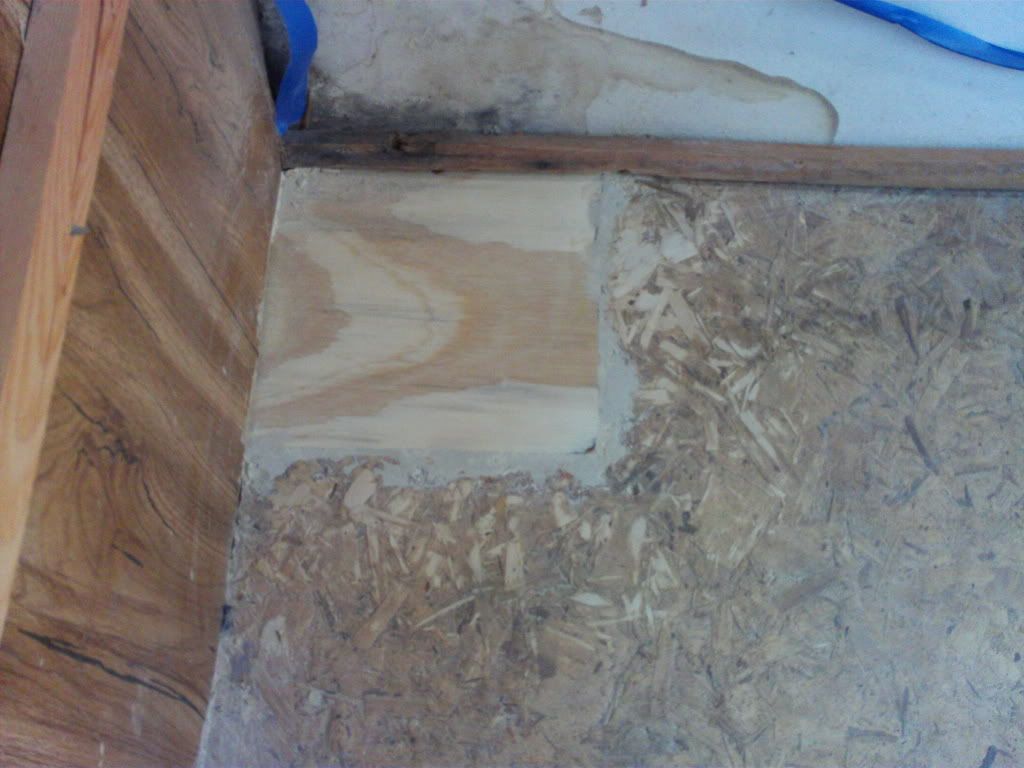Finally, after this weekend, I'm going to mark the status of the floor patch as "Completed." I wanted to collect all the work on this issue into one post even though it took me over a month from start to finish.
Here is the hole after I poked through some rotted wood in the corner:
I purchased a jig-saw and cut out a square making sure that I got out all the rotted wood:
After much adventure obtaining the wood and getting it to fit in the hole, I eventually found a piece of wood that fit (sort of).
I attached the outside wall to the new patch with screws. I used some spray foam insulation to fill in the gaps and, once it dried, cut off the excess so that it was even with the floor. Next I used wood filler around the edges (not real sure why exactly. It just seemed like a good idea.)
I realize that it looks terrible but I was just waiting for it to dry so I can sand it smooth. I did use a wall scraper to push the wood filler down into the crack around the patch as much as possible. After it dried, I plugged my hand sander up and sanded it all smooth.
Hey, it might be ugly but it is as smooth as glass. Rubbing your hand on the floor, you wouldn't be able to tell where the patch starts and the floor ends. The look doesn't matter much anyway since I will be laying a new floor on top of it.
I know it's not beautiful work but I am quite proud of it.
more tomorrow . . .
Tuesday, March 9, 2010
Subscribe to:
Post Comments (Atom)








Excellent job on the floor patch, Kevin! I don't know if you've ever put down flooring before or not, but it's good that you sanded the patch the way you did. If you're going to use any kind of vinyl flooring (sheet vinyl or vinyl tile) any kind of bump or depression in the floor will telegraph through the vinyl, and can be seen from a mile away. (Just something else to think about for the rest of the floor.) With it sanded smooth like that, you're the only one who's going to know it was patched. Something I would do, however, is seal the outside edges of the plywood patch. The edges where the plywood was sealed to the floor with foam and filler are fine. But if the other two edges can get wet at all, you should really cover them. If you have a little bit of exterior house paint, marine spar varnish, or marine spar urethane, go ahead and brush a couple of coats onto the exposed edges. Don't worry too much about the bottom surface of the plywood - if you want to paint it, fine, but it's not as important as the edges. If the flat bottom surface gets wet, it'll dry. The edges, however, will let water get in between the layers of wood vernier that make up the plywood and it'll start to fall apart. The glue used in making plywood isn't very waterproof at all. The only way to keep the plywood from delaminating is to seal it up. I wouldn't try to spray paint it - just brush on a good heavy coat of exterior paint, let it dry, then brush on another coat.
ReplyDeleteOverall though, great job on the patch! You SHOULD be proud of it.
Thanks, Dusty! I definitely appreciate the tip about painting the outside edges and I hope to get to that this coming weekend.
ReplyDeleteMy only "flooring" experience was when I ripped up the kitchen floor in my old house in Memphis and laid down new vinyl tiles.
I had to use a heap of intoxicating, cancer inducing goo to remove all the glue that was used to attach the original floor. I fear I may have lost a year or two of my lifespan on that job.
While doing this, occasionally, strips of plywood would come up as well. I tried to avoid this as best I could.
Once the old floor and glue were removed and my head cleared of the toxic fumes, I examined the situation. There were a few groves left in the floor where the plywood had come up. I ran my hand across them and decided that they were too shallow to make a difference.
I laid the new floor down and, trust me, it looked absolutely beautiful...
... For about three months until it started to crack. Those cracks were suspiciously in the same places where the aforementioned groves were located.
Yes, I learn all my lessons the hard way.
Thanks again.